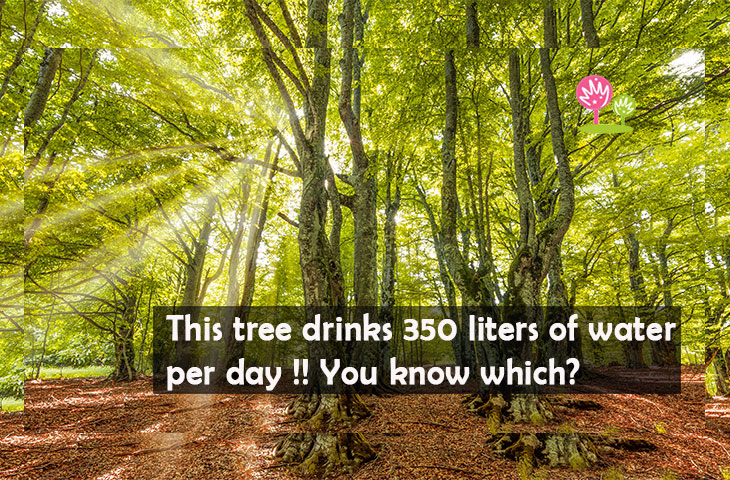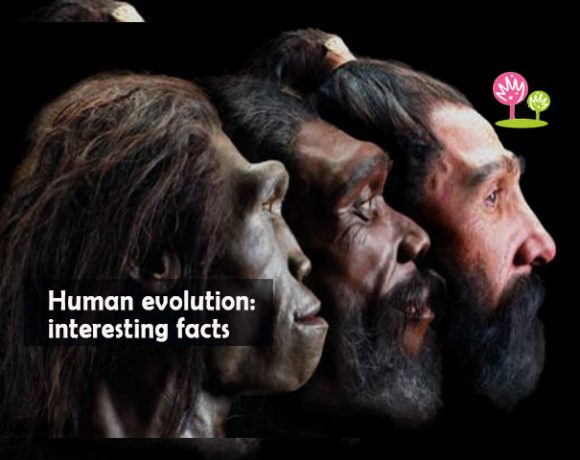This tree drinks 350 liters of water per day !

A tree is a perennial plant with an elongated stem, or trunk, that supports branches and leaves in most species, according to botany. In certain cases, a tree’s meaning can be narrower, encompassing only woody plants with secondary growth, plants that can be used as timber, or plants that are taller than a certain height. Taller palms, tree ferns, bananas, and bamboos are also trees in a broader context. Trees are not a taxonomic community, but rather a collection of plant species that have developed a trunk and branches to compete for sunlight by towering over other plants. Trees have a long lifetime, with some approaching thousands of years.
Trees have lived for over 370 million years. The world’s total number of mature trees is estimated to be about three trillion. Many secondary branches are protected clear of the ground by the trunk of a tree. Woody tissue for strength and vascular tissue to transport materials from one section of the tree to another make up the trunk. It is covered by a layer of bark that functions as a defensive shield for most trees. The roots branch and spread out widely underneath the earth.
They act as anchors for the tree and draw moisture and nutrients from the surrounding soil. The branches split into smaller branches and shoots above level. The leaves on the shoots absorb light energy and convert it to sugars through photosynthesis, providing food for the tree’s growth and development. Seeds are the most common way for trees to replicate. Flowers and fruit may be present, but pollen cones and seed cones are only on some trees, such as conifers. Trees play an important role in erosion control and climate regulation.
Some amazing facts about trees
- On the world, there are over 60,000 different tree species.
- A large oak tree can consume more than 350 litres of water per day.
- We get a positive feeling from trees. According to research, being surrounded by trees decreases blood pressure, slows heart rate, and reduces stress levels.
- Mature trees are in high demand and can dramatically raise the value of your house.
- Dendrochronology is the analysis of a tree’s rings to determine its age.
- Surprisingly, tree rings can show more than just a tree’s age; they can also reveal the occurrence of natural disasters like volcanic eruptions or droughts.
- The world’s largest living tree is said to be a giant sequoia (Sequoiadendron giganteum) known as “General Sherman” in California, with a Biomass of 1487 cubic metres.
- The ancient Bristlecone Pine Methuselah, believed to be 4,765 years old, is one of the world’s oldest living trees.
- The highest totals for endangered tree species are found in Brazil, Colombia, and Indonesia, which makes sense considering the overall biodiversity found in their native forests.
- Wattieza, the world’s oldest tree, was discovered in 385 million-year-old fossils in what is now New York. It was the first recorded forest and was part of a prehistoric plant family thought to be the ancestors of ferns. It stood 26 feet (8 metres) tall and was part of a prehistoric plant family thought to be the ancestors of ferns.
- Simply looking at trees has been shown to make us feel happy, less anxious, and more creative. This is partially due to phytoncides, which are chemicals released by plants. According to studies, inhaling them has impressive benefits such as lowering blood pressure, lowering anxiety, and the pain threshold – and they can also raise our levels of anti-cancer proteins !
- By suppressing sound waves, trees reduce noise. Sound attenuation, or the reduction of sound volume, is how they suppress noise. Sound waves are absorbed and deflected by leaves, twigs, and branches on trees, shrubs, and herbaceous growth, masking unwanted noise.
- Climate change can be mitigated by planting trees. Each year, a mature tree can consume more than 48 pounds of carbon dioxide, absorbing and storing the carbon while releasing oxygen back into the atmosphere. Each year, trees in Chicago eliminate over 18,000 tonnes of emissions from the air.
- Water quality is increased by trees. Rainfall is slowed and filtered by trees as it falls to the Earth, allowing it to soak into the soil. Trees then act as natural sponges, soaking up and absorbing rainwater before slowly releasing it into streams and rivers. They also limit stormwater runoff and flood damage by preventing soil erosion into our waterways.
- Throughout the year, various sections of a tree grow at different times. The majority of foliage growth occurs in the spring, with trunk growth occurring in the summer and root growth occurring in the fall and winter.
- The moon has been visited by several trees. During the Apollo 14 launch in early 1971, seeds were brought to the moon and developed into “Moon trees.” NASA and the US Forest Service decided to see how the moon’s orbit influenced how seeds formed on the ground. In 1975 and 1976, the trees were given to the state forestry services.
















